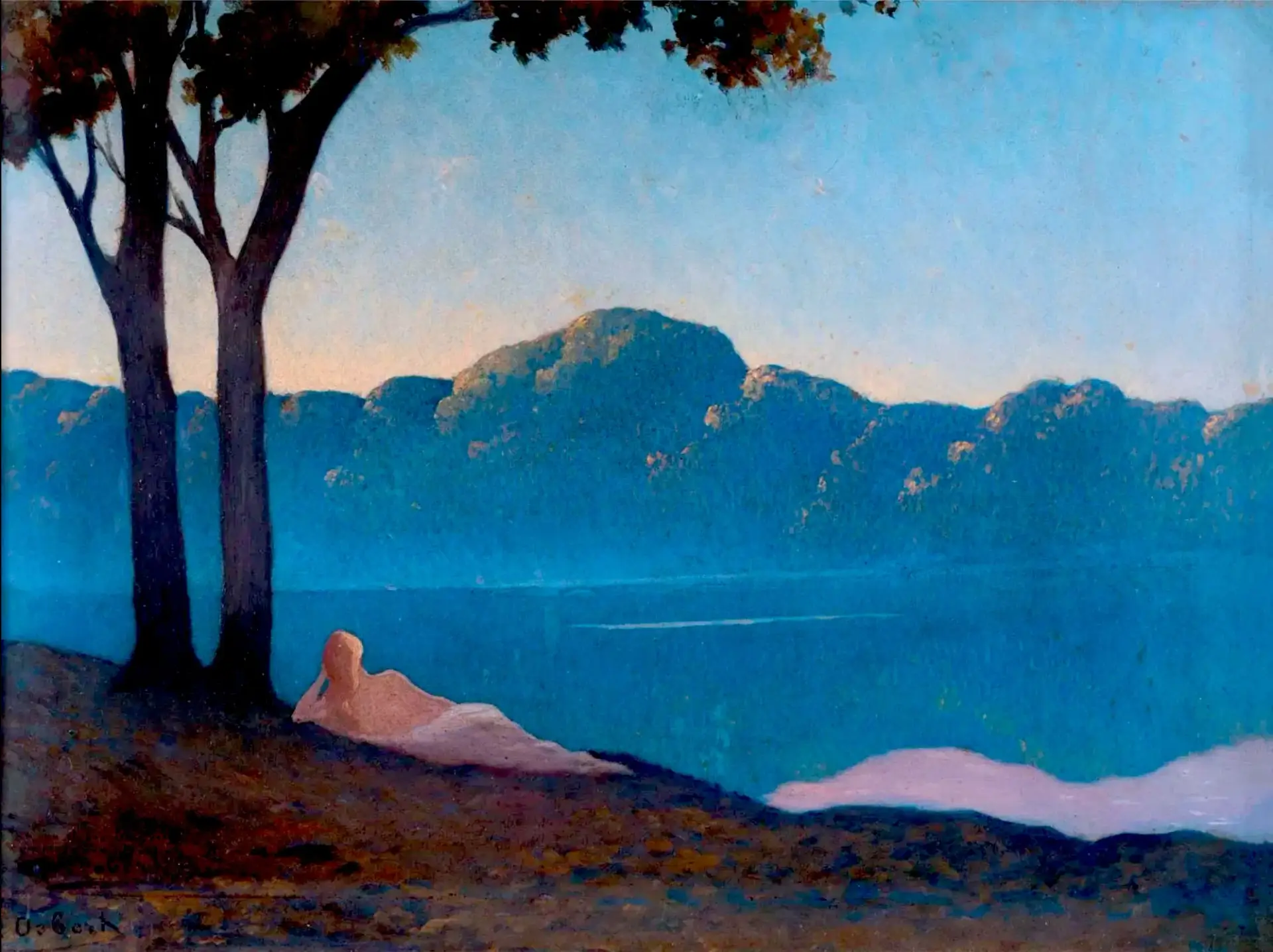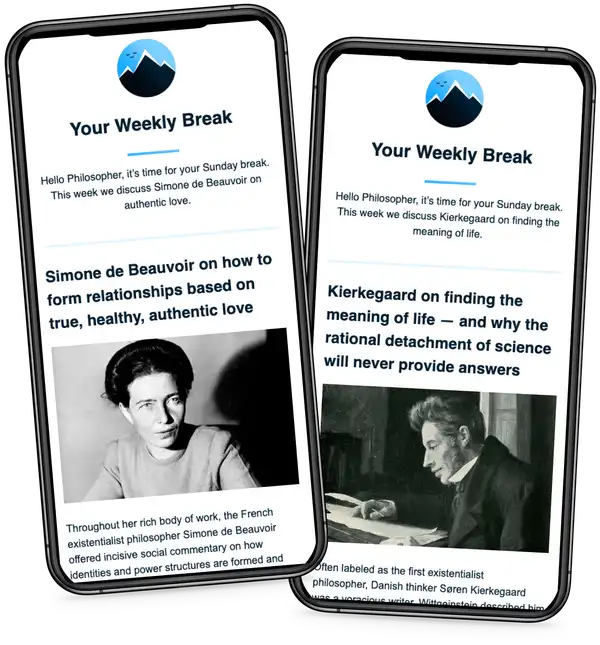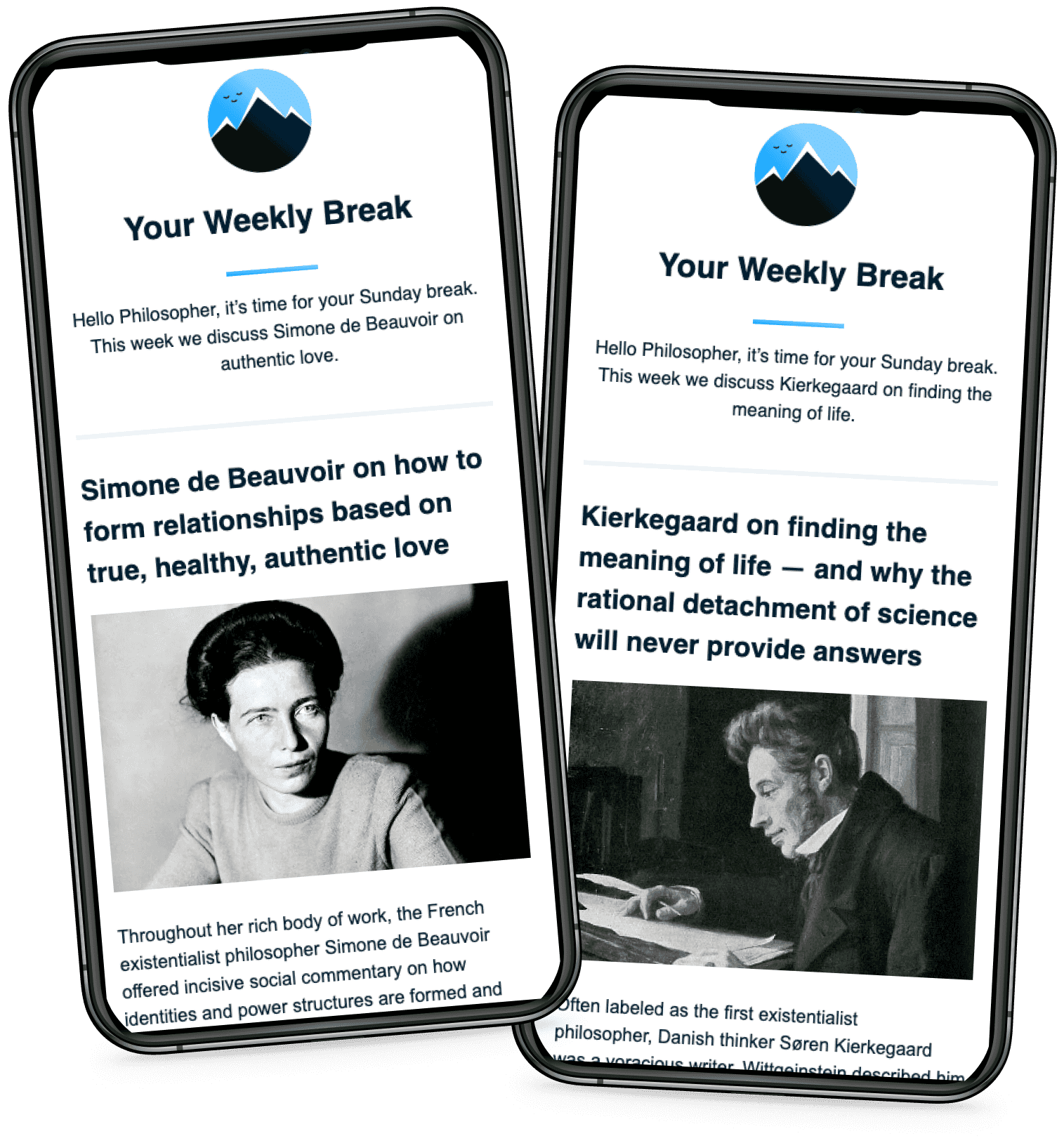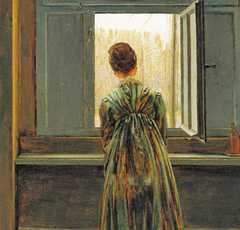
Ruth Chang on Making Difficult Life Decisions
Contemporary philosopher Ruth Chang suggests if we’re stuck in a hard life choice, we shouldn’t fool ourselves into thinking there must be a ‘best’ path; often there are simply different paths, which will change us in different ways. We can move forward by introspecting on who we wish to become.

Every now and then, life asks us a question we aren’t quite sure how to answer. Which career should we pursue? Should we have children? Should we move to the coast, or closer to our friends?
We gather information, read testimony, and place our exhaustively researched options on either side of the scales, but the scales never settle. One option seems better in some ways, the other seems better in others, and we find ourselves stuck between them. The ‘best’ answer eludes us.
This is what the philosopher Ruth Chang (in a 2017 paper) calls a ‘hard choice’.
Chang proposes that what makes these kinds of choices hard is not so much their content but their structure: they don’t fit into our standard trichotomy of value in decision making.
Usually, we compare two options using ‘better’, ‘worse’, or ‘equal to’. If there are better reasons to do X than Y, then the rational thing is to pick X; meanwhile, if X and Y are equal, then it doesn’t matter which one we pick.
But hard choices defy this evaluative framework. They involve cases where choices are no better or worse than each other — yet, crucially, neither are they equal to one another.
Perhaps this seems strange. Our dilemma surely exists, we might think, because the options are equally good and we can’t decide between them.
But Chang suggests this is a mistake. When we’re stuck in a hard choice, the decision is difficult not because it involves equality, but because it involves difference.
One option is no better or worse than the other, but they lead to different — often mutually exclusive — kinds of futures, and we cannot decide which kind of future to have.
When it comes to hard choices, Chang thus argues, the standard trichotomy of ‘better’, ‘worse’, and ‘equal to’ is insufficient.
To aid our thinking, she introduces a fourth dimension: parity. We should think of the options not as equal, Chang suggests, but as on a par.
Parity: when external reasons ‘run out’
Thinking in terms of parity can help us clarify what’s at stake in hard choices. Suppose a young person is stuck between pursuing a career in forestry or law. They see the former as better in some ways (more time outdoors, preserving a valuable ecosystem), and law as better in others (more financial security, and their parents prefer it).
They’ve researched the decision as much as they possibly can. They’ve garnered testimony from foresters and lawyers. But still they can’t decide.
The young person might think, “if only I could see how my life would go in forestry, and then in law, so I could compare the two and make a more informed choice about which is better or worse…”
But Chang argues that even if the young person could do this, it wouldn’t help them decide. They would simply bear witness to two different kinds of life, both with their own rewards and hardships, and watch themselves become a different version of themselves in each.
Even with the ability to see into various futures, then, the difficult decision of which future to pick would remain.
This is the crux of hard choice: when options are on a par, we hunt for a definitive reason, given to us by the world, for picking one over the other — but no reason presents itself. The way isn’t signposted. External reasons have ‘run out’.
But rather than feel mired in gloom or anxiety by this, Chang notes, we might actually see it as quite powerfully liberating. If external reasons have run out, then perhaps we can choose to be guided by internal ones…
We can generate intrinsic reasons for selecting one future over another
If options are on a par, and no new external reason can tip the balance, then it simply means there is no ‘right’ answer. There is no objectively ‘correct’ path. If there was, how boring the world would be! We’d all choose to do exactly the same things, for exactly the same reasons. We would only do ‘this’ job, ‘these’ hobbies, live ‘here’, because these are clearly the best or highest value jobs, hobbies, or dwellings around.
But we don’t live in that world, Chang reminds us. We live in a world of hard choices, where there aren’t necessarily best jobs, hobbies, dwellings or futures; where different paths appear to be on a par.
Through hard choices, we thus have an opportunity to live not for external reasons but internal ones. We have a precious chance to inject our own agency into what we decide. We don’t opt for a particular path because it’s ‘better’ (it’s not, it’s on a par); we choose it because we’ve decided to commit to living a certain kind of life, and to becoming a certain kind of person.
So, though being stuck in a hard choice is indeed hard, it’s also a space where we actually get to exercise our freedom. When choices are on a par, we become the deciding factor. By putting our agency behind a particular option we author our lives: through our commitment to choices we reveal who we are.
Chang thus thinks that we should approach hard choices not by rather haplessly attempting to determine a non-existent ‘best’ path, but by tackling questions of deep personal identity.
Not: which option is best? But: who am I? Who do I want to be?
“Here’s who I am,” announces the young person. “This is what I stand for. I am someone who commits to the forest!”
How can we know what to commit to?
Of course, simply committing to an option is easier said than done, particularly if the stakes of our choice seem high. The young person doesn’t want to ‘waste’ the early stages of their career by committing to the ‘wrong’ field. The anxious lover doesn’t want to commit to the ‘wrong’ person. The retiree doesn’t want to relocate to the ‘wrong’ stretch of coastline.
A common response to hard choices, Chang thus notes, is to ‘drift’. We put off the decision, opt for the safest route, or follow the path of least resistance.
The young person knows pursuing law meets their family’s approval, and presents less financial insecurity; they don’t ‘commit’ to pursuing law, they don’t ‘put themselves behind’ the decision, but they drift into it anyway.
Drifting for a while is absolutely normal and necessary, Chang assures us; but if we find ourselves drifting through all our major decisions, then we give up the chance to really express our existential freedom. We haven’t fully stood behind or for anything. Life has happened to us, decisions have been made for us, we’ve allowed the world to write our stories.
This is the hard lesson of hard choices: there are no quick fixes or silver bullets that can help us do the difficult introspective work needed to ‘make up’ our minds.
If we feel ourselves drifting for a long time, we might reflect with brutal honesty on what we could put our agency behind, what our personhood could actually be for, and through hard choices, become that person.
As Chang ends her 2017 paper, Hard Choices:
When our given reasons are on a par, as they are in hard choices, we have the normative power to create will-based reasons for ourselves to choose one alternative over the other. It is not facts beyond our agency that determine whether we should lead this kind of life rather than that, but us. In this way, we make ourselves who we are through the exercise of our normative powers in hard choices.
Whenever external reasons have ‘run out’, Chang thus tells us, we should always try to remember that this means there is no objectively ‘best’ option; there are simply different options, which will change us in different ways.
So, rather than trying to determine the ‘correct’ choice, rather than looking outside ourselves for reasons, we should look inside, and ask ourselves: who am I to be? What is the future version of myself I can sincerely stand behind? Who is the person I want to become?
If we can begin to answer such questions, then we might catalyze the production of more decisive, will-based reasons to move forward.
I am someone who ___________!
What do you make of Chang’s analysis?
- Do you find her idea of ‘parity’ adds a helpful dimension to thinking about the value of various choices?
- Do you think ‘commitment’ is a useful and empowering idea? Or does it not help in the face of hard choice?
- Which crossroads have you faced in life, and how did you decide which path to take?
To inform your answers, you might enjoy the following related articles:
- Laurie Ann Paul on How to Approach Transformative Decisions
- Kierkegaard: Life Can Only Be Understood Backwards, But It Must Be Lived Forwards
- The Paradox of Choice: Barry Schwartz on Why More is Less
- Existence Precedes Essence: What Sartre Really Meant
- Heidegger On Being Authentic in an Inauthentic World
- Nietzsche On What ‘Finding Yourself’ Actually Means
- Hunter S. Thompson: Don’t Look for Goals, Look for a Way of Life
Get one famous philosophical idea in your inbox each Sunday
If you enjoyed this article, you might like my free Sunday breakdown. I distill one piece of wisdom from philosophy each week; you get the summary delivered straight to your email inbox, and are invited to share your view. Consider joining 24,000+ subscribers and signing up below:

From the Buddha to Nietzsche: join 24,000+ subscribers enjoying my free Sunday Breakdown
In one concise email each Sunday, I break down a famous idea from philosophy. You get the distillation straight to your inbox.
💭 One short philosophical email each Sunday. Unsubscribe any time.
About the Author

Get one mind-opening philosophical idea distilled to your inbox every Sunday (free)

From the Buddha to Nietzsche: join 24,000+ subscribers enjoying a nugget of profundity from the great philosophers every Sunday:
★★★★★ (100+ reviews for Philosophy Break). Unsubscribe any time.

Take Another Break
Each break takes only a few minutes to read, and is crafted to expand your mind and spark your philosophical curiosity.





